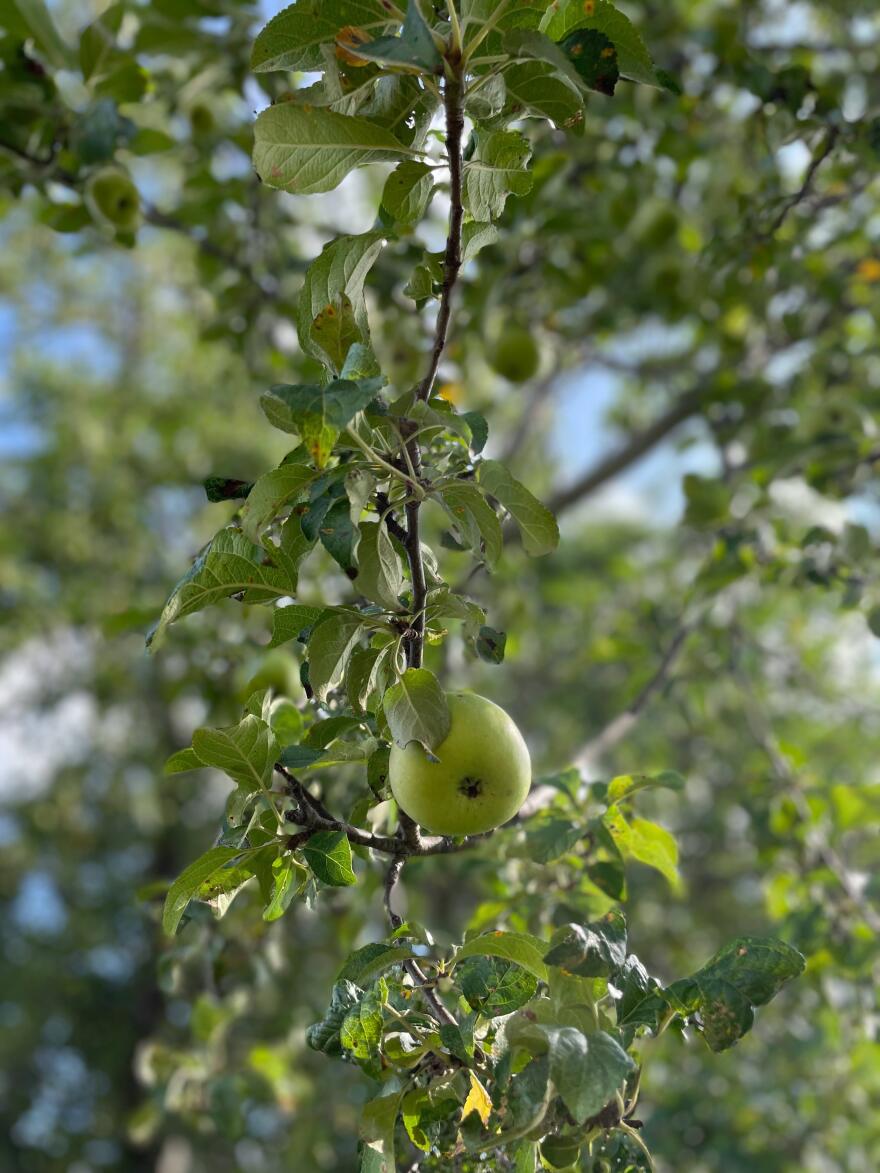Highland County sometimes feels more like Vermont than Virginia. Locals sell homemade maple syrup at the farmers market. And even in late summer, the town pool in Monterey never really warms up; daytime highs average in the upper-70s.
The climate is part of the draw for Kirk Billingsley — as are the wild apples he harvests every fall on the slopes of Monterey Mountain in the rustic Blue Grass Valley. The apple trees react to stress brought on by the altitude, as well as the swings in temperature that accompany it, by becoming more acidic, giving his cider a special bite.
“There’s a brightness to the cider when you have that acidity,” Billingsley said on an August visit to the pasture fields where the apple trees grow and Angus cattle graze.
Billingsley’s award-winning Wild Meadow Cider is made exclusively of these foraged apples. His Big Fish Cider company is part of a wave of makers who are branching out from the juicy, sweet stuff in the grocery store. They’re creating what they call “vintage cider” in smaller batches, toying with foraged fruit and wild fermentation that’s more like natural wine than Angry Orchard cider. Nationally, these regional craft ciders make up a growing share of the cider market.

The process has deep roots in Virginia, where European settlers at Jamestown planted one of — if not — the first apple orchards in North America in 1614. David Zakalik, a fellow at the National Arboretum who studied cider for his Ph.D. at Cornell University, has some theories on why apples — and the cider they produced — were tempting to the colonizers: “They probably wanted some sweetness in their lives.”
Zakalik said cider was the most common alcoholic drink in the United States through the 1840s or ’50s. He said it began to lose cache as the country urbanized and became less English, where cidermaking is especially popular.
“Cider came to be viewed as this sort of backwoods country drink,” Zakalik said.
Virginia cider pioneer Diane Flynt helped kick off the craft cider revival more than two decades ago at her orchard south of Floyd.
“Foggy Ridge was the first cidery in the South — the first cidery south of Massachusetts,” Flynt said in an interview.
Flynt was inspired by a small group of cidermakers in the Northeast and Northwest U.S., who were treating cider like fine wine. They made cider once a year, picking their fruit in the late summer and fall, pressing it and fermenting it slowly.
Flynt’s Foggy Ridge Cider was a two-time finalist for the prestigious James Beard Award before she shut down operations in 2017. But Flynt said she was drawing from a rich tradition — the topic of her new book, “Wild, Tamed, Lost, Revived: The Surprising Story of Apples in the South.”
In the South, cider’s reach went well beyond Appalachia, according to Flynt; enslaved people, Native Americans and city dwellers all made the beverage. Over generations, people across the U.S. experimented with different seeds. The ones they liked best were grafted onto new trees.
“People choose apples; they put their desire on the apples,” Flynt said.
Billingsley’s fascination with cider maps to rich childhood memories. His family had a few apple trees in their yard in Monterey, and every year, they’d turn the fruit into a nonalcoholic brew.
“I can remember as a child getting off the school bus and running out to the barrel to fill up a glass,” Billingsley said.
Decades later, it’s clear his enthusiasm hasn’t waned. Big Fish Cider uses apples from unsprayed orchards and wild trees. The trees grew haphazardly, after some bird or deer munched on a fruit and pooped out the seed.
Billingsley is the first to admit foraging apples is not an easy enterprise. Harvest season means bumping around country fields, dodging gopher holes, and scaring off bears and cows. But his workplace offers what Billingsley calls one the world’s most beautiful views: Tree-topped ridges that bottom out into the Blue Grass Valley.
It’s hard to imagine Billingsley’s backroad rambles supplanting a traditional orchard; most cider sold in the U.S. is made on an industrial-scale. Often it’s watered down and flavored, according to Billingsley and Flynt.
Cidermakers Patrick Collins and Danielle LeCompte, who are married, are doing something more improvisational in a corner of a Charlottesville warehouse with their company, Patois.

“There will never be any time where we're sitting on our hands being like, ‘Well, we figured it out,’” Collins said during a recent visit.
At Patois, they use wild apples and ferment in the bottle, sometimes borrowing techniques from champagne makers. Some of the experimentation — like relying on wild fruit, including some from Flynt’s property in Floyd and a roadside tree — is partly done out of necessity. As a couple with a young child, they don’t have the means to grow trees of their own.
And Collins isn’t sure he always wants to be foraging. “I can't be 60 with a machete fighting the bears for fruit,” he said.
But the unpredictability is also part of the thrill.
“I think there also is just something to the like, ego melt of it, where our intention will always be subsumed by the vagaries of a given year,” Collins said.
Collins said there’s another reason to keep using foraged apples: climate change. The wild apple trees provide genetic variety. Some, he hopes, will be able to live on a hotter planet — and help map the future of cider in a warming world.



